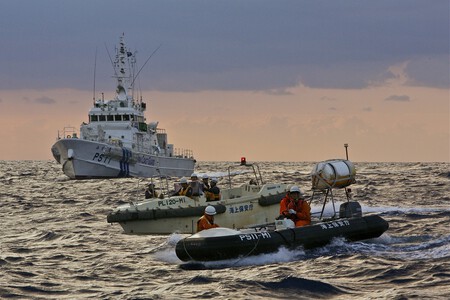In 2018, a buoy appeared in Japan’s exclusive economic zone (EEZ) in the East China Sea. Strategically placed near the Diaoyu Islands (known as the Senkaku Islands in Japan), the buoy displayed the Chinese flag. Since then, the number of buoys has increased, sending a clear message regarding historical claims. According to China, these islands have been Chinese territory for centuries.
Historical context. The dispute dates back to the 19th century, when Japan annexed the islands in 1895 following the First Sino-Japanese War. After World War II, the U.S. administered the islands until 1972, when they were returned to Japan. This action sparked protests from China and Taiwan because both countries claim the islands based on historical records dating back to the Ming dynasty.
The situation intensified in 2012 when Japan nationalized some of the islands. This led to strong reactions in China, including widespread demonstrations and a deterioration in bilateral relations. Over the years, China and Japan have increased their military presence and maritime patrols in the area. It has resulted in frequent incidents between Chinese and Japanese ships. The dispute is still a significant point of tension in East Asia.
A diplomatic gesture amid escalating tensions. On Monday, China removed one of the buoys it had placed in Japan’s EEZ near the disputed Senkaku Islands. This move was first seen as a diplomatic gesture. The Japan Coast Guard confirmed that the buoy, which was installed in July 2023, has been relocated outside of Japanese jurisdiction.
The installation of buoys in waters near the Senkaku Islands is part of a Chinese strategy to reaffirm its territorial claim over the islands. Tokyo has repeatedly protested this action and demanded the removal of the buoys.

China’s position. A Chinese Foreign Ministry spokesperson said that the buoy had “completed its task at the site,” implying that its removal was voluntary and for technical reasons. Beijing asserts that these devices are solely for hydrometeorological purposes, intended to monitor ocean currents and climate. However, analysts caution that the data collected, such as water temperature, may have military applications.
China-Japan relations. The buoy was removed amid improving diplomatic relations between China and Japan. In December, Japanese foreign minister Takeshi Iwaya visited Beijing, which led to the easing of visa restrictions for Chinese citizens. Additionally, China committed to gradually lifting its ban on Japanese fish products, which was imposed following the release of treated water from the Fukushima nuclear plant.
These positive gestures have opened the door for a potential summit between Japanese Prime Minister Shigeru Ishiba and President Xi Jinping, which may take place in May.

However, tensions have increased. The situation in the East China Sea is far from resolved. In 2023, Chinese Coast Guard vessels were spotted near the Senkaku Islands for a record 353 days. Additionally, the Japanese Coast Guard recently reported that four Chinese government vessels briefly trespassed into Japanese territorial waters. According to Chinese authorities, these actions are intended to protect China’s rights and interests in the area in accordance with the law.
In December 2023, Japan detected a new buoy near Yonaguni Island, located in the southwest of its territory, and demanded its removal. Beijing has consistently rejected this demand, asserting that the buoy’s purpose is solely meteorological. Japanese chief cabinet secretary Yoshimasa Hayashi has refrained from speculating on the reasons behind the removal of the buoy in the Senkaku Islands. However, he’s reaffirmed that Japan will continue demanding China to remove the buoy in Yonaguni.
Distancing Japan from the U.S. The removal of the buoy could be seen as an effort by China to improve its relations with Tokyo while simultaneously undermining the Japan-U.S. alliance. One thing is clear: The growing rivalry between Beijing and Washington has intensified since President Donald Trump’s return to the White House. This has prompted China to adopt new diplomatic strategies in the region.
Meanwhile, Ishiba and Trump recently met for the first time, reaffirming their commitment to confront “Chinese economic aggression” and “provocative activities” in the South and East China Seas. In a joint statement, the two leaders emphasized the importance of stability in the Taiwan Strait and expressed support for Taiwan’s participation in international organizations. China reacted with indignation, condemning these statements as direct interference in its internal affairs and filing diplomatic protests against both the U.S. and Japan.
What happens next? The standoff appears to persist in this ongoing give-and-take between China and Japan, where one side advances while the other retreats. Although the removal of the buoy near the Senkaku Islands may suggest a diplomatic gesture, the reality in the East China Sea remains dominated by territorial disputes.
The continued presence of Chinese vessels in the area and the refusal to remove the buoy near Yonaguni leave little doubt that China is determined to strengthen its control over these strategic waters.
Image | Al Jazeera | GnolizX | Chinese Academy of Science



Log in to leave a comment